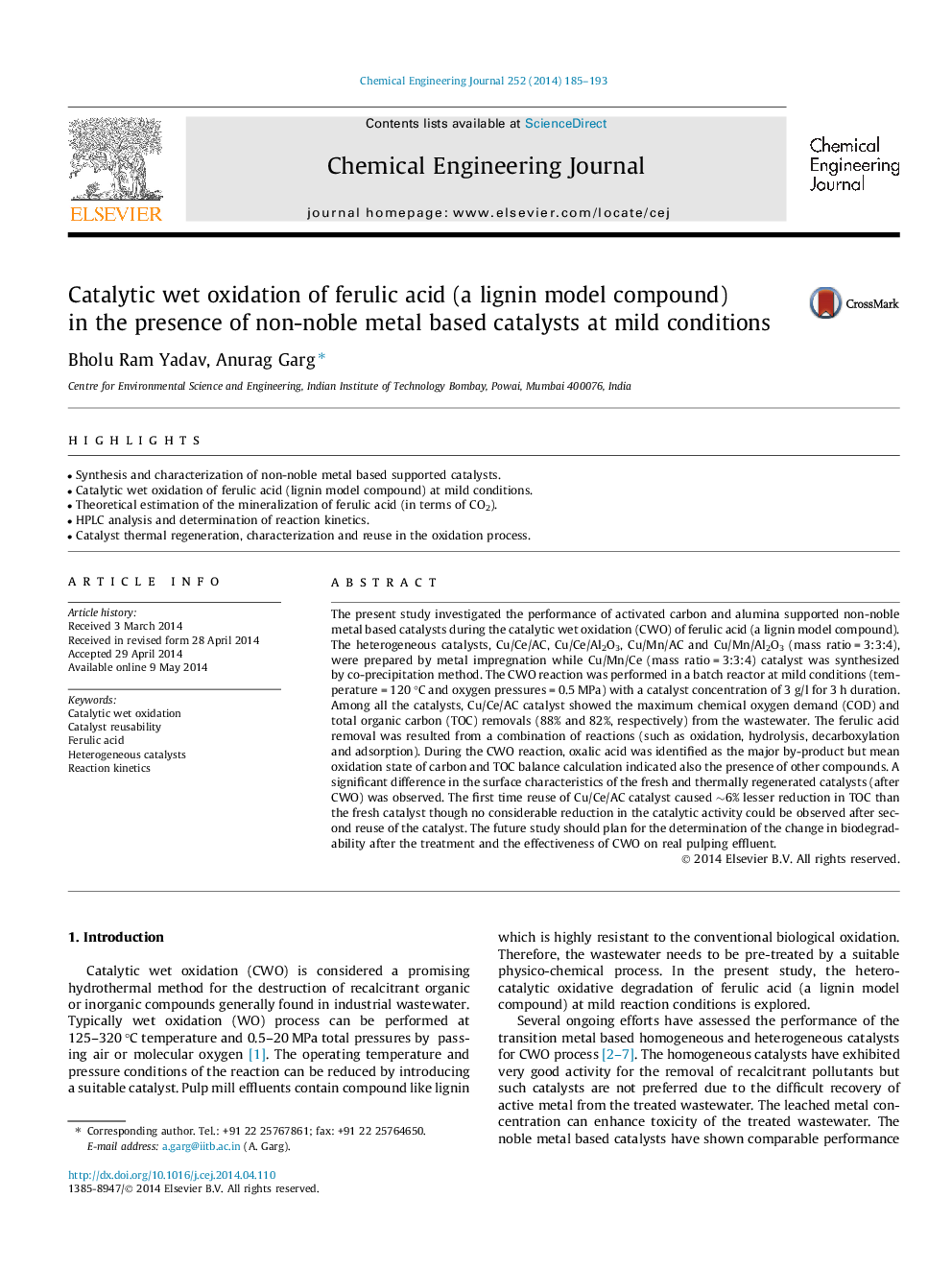| کد مقاله | کد نشریه | سال انتشار | مقاله انگلیسی | نسخه تمام متن |
|---|---|---|---|---|
| 147134 | 456386 | 2014 | 9 صفحه PDF | دانلود رایگان |
• Synthesis and characterization of non-noble metal based supported catalysts.
• Catalytic wet oxidation of ferulic acid (lignin model compound) at mild conditions.
• Theoretical estimation of the mineralization of ferulic acid (in terms of CO2).
• HPLC analysis and determination of reaction kinetics.
• Catalyst thermal regeneration, characterization and reuse in the oxidation process.
The present study investigated the performance of activated carbon and alumina supported non-noble metal based catalysts during the catalytic wet oxidation (CWO) of ferulic acid (a lignin model compound). The heterogeneous catalysts, Cu/Ce/AC, Cu/Ce/Al2O3, Cu/Mn/AC and Cu/Mn/Al2O3 (mass ratio = 3:3:4), were prepared by metal impregnation while Cu/Mn/Ce (mass ratio = 3:3:4) catalyst was synthesized by co-precipitation method. The CWO reaction was performed in a batch reactor at mild conditions (temperature = 120 °C and oxygen pressures = 0.5 MPa) with a catalyst concentration of 3 g/l for 3 h duration. Among all the catalysts, Cu/Ce/AC catalyst showed the maximum chemical oxygen demand (COD) and total organic carbon (TOC) removals (88% and 82%, respectively) from the wastewater. The ferulic acid removal was resulted from a combination of reactions (such as oxidation, hydrolysis, decarboxylation and adsorption). During the CWO reaction, oxalic acid was identified as the major by-product but mean oxidation state of carbon and TOC balance calculation indicated also the presence of other compounds. A significant difference in the surface characteristics of the fresh and thermally regenerated catalysts (after CWO) was observed. The first time reuse of Cu/Ce/AC catalyst caused ∼6% lesser reduction in TOC than the fresh catalyst though no considerable reduction in the catalytic activity could be observed after second reuse of the catalyst. The future study should plan for the determination of the change in biodegradability after the treatment and the effectiveness of CWO on real pulping effluent.
Journal: Chemical Engineering Journal - Volume 252, 15 September 2014, Pages 185–193
